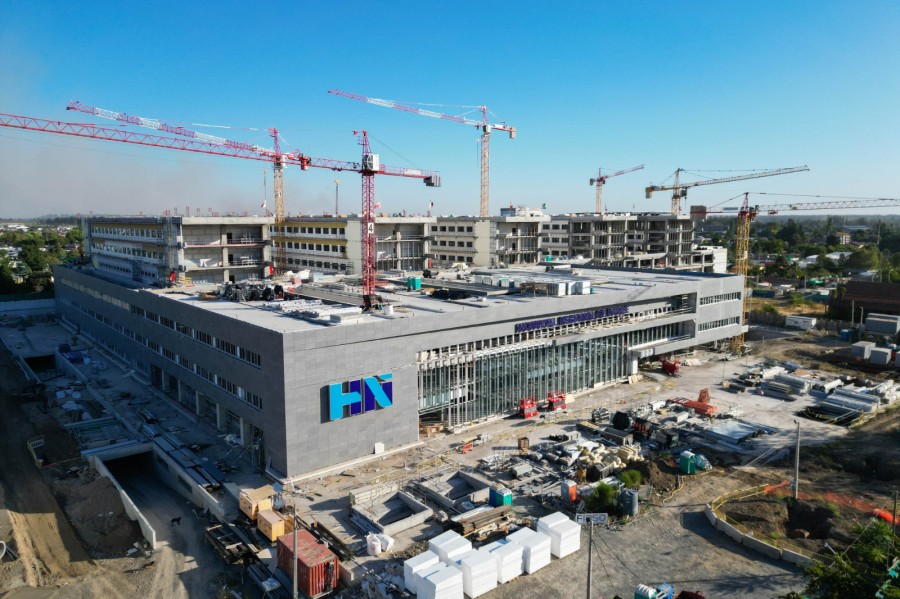The November 2023 inauguration of the Ñuble Regional Hospital in Chillán, Chile, brings state-of-the-art medical care to this remote region in Central Chile. PENETRON ADMIX, a crystalline permeability reducing admixture for hydrostatic conditions, was specified for all below-grade concrete structures of the new hospital for protection from high groundwater levels.
The Ñuble Regional Hospital is located in the city of Chillán, an administrative center and capital city of the Diguillín Province of Central Chile. With over 175,000 inhabitants, the city is also home to the Agricultural Department of the University of Concepción, a military base, and is a transportation hub for the Ñuble Region.
Constructed over a four-year period, the US$ 285 million project was the largest public investment in the Ñuble Region of Chile. The seven-story Regional Hospital of Ñuble features 128,000 m2 (1.4 million ft2) of floor space for a 530-bed healthcare facility, which doubles the critical beds available in the previous Herminda Martín Hospital. The new facility incorporates 14 wards, five comprehensive delivery rooms, and an Outpatient Care Center for Medical and Oncological specialties. A renovated ambulatory care center for medical and dental specialties was also completed. The hospital grounds comprise a public park, an underground parking garage, an auditorium and outdoor amphitheater.
“As an integral part of the community, the new Regional Hospital of Ñuble also has cultural relevance, with signage in Mapudungún, the local dialect, and an outdoor plaza featuring a Mapuche ceremonial area that incorporates the Chemamull or Rewe ceremonies,” explains Domingo Lema, Managing Director of Penetron Chile.
Initially, a pore-blocking additive was specified for the below-grade concrete structures of the hospital. However, this specification was considered insufficient by the project engineer due to the high groundwater levels prevalent in the Ñuble region.
PRAN or PRAH?
A pore blocking additive, or hydrophobic material, is a permeability reducing admixture for non-hydrostatic conditions (PRAN). This type of admixture typically forms a “gel layer” around the pores in a concrete matrix to block water from moving through. It does not fill the pores completely like the non-soluble crystals generated by PENETRON ADMIX, a permeability reducing admixture for hydrostatic conditions (PRAH). This is why a PRAN cannot withstand high hydrostatic pressure, such as the conditions encountered at the construction site in Chillán. The project specifications were subsequently altered to specify a concrete waterproofing solution based on a PRAH.
Ready-Mix Concretes, the project’s concrete supplier, delivered 3,300 m3 of PENETRON ADMIX-treated concrete for the foundation slabs for the entire hospital. Construction of the Regional Hospital of Ñuble was carried out by INSO.
“PENETRON ADMIX was specified over a competitive PRAH thanks to a more economical solution, a more comprehensive guarantee of concrete permeability reduction, and the ability to self-heal hairline cracks over the service life of the concrete,” adds Domingo Lema.

Below-grade concrete protected by Penetron: The seven-story Ñuble Regional Hospital has 1.4 million ft2 of floor space for 530 beds, 14 wards, five delivery rooms, and an Outpatient Care Center.



